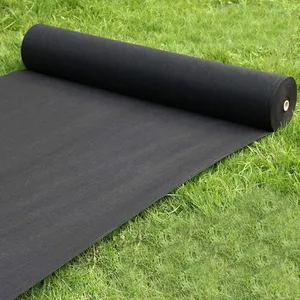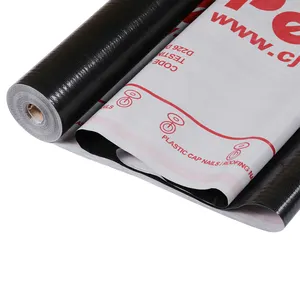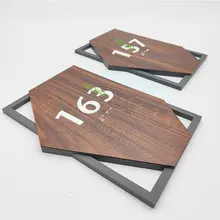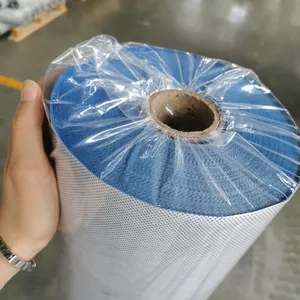What are Roofing Felts
Roofing felts, also known as tar paper or roofing tar, are materials employed in the construction of buildings to provide an additional layer of protection to the roof structure. Designed to shield the roof from water infiltration and damage, roofing felts are typically made from a base material such as fiberglass or polyester, which is then coated or saturated with a protective layer of bitumen. This combination creates a water-resistant barrier that lies underneath the main roofing material, whether that be shingles, tiles, or metal panels.
Intended for use by builders, contractors, and developers in the construction and renovation of various types of buildings such as homes, offices, warehouses, and more, roofing felts play a crucial role in ensuring the longevity and durability of roof structures. The principle behind their effectiveness is simple: they act as a secondary barrier to water, preventing leaks and moisture build-up that can lead to mold growth, wood rot, and structural damage. By repelling water and providing an extra layer of insulation, roofing felts also contribute to a building's overall energy efficiency.
The installation of roofing felts is integral to the roofing process. After the roof deck is prepared, rolls of felt are rolled out and nailed or stapled into place, overlapping each other to prevent any gaps where water could potentially penetrate. In some cases, self-adhesive felts are used for easier application. The main roofing material is then installed on top of this protective base. While often hidden from view upon completion of the roof, the presence of roofing felts is essential for maintaining the integrity of a building's envelope against environmental factors.
Types of Roofing Felts
The various types of roofing felts available cater to different requirements and preferences within the construction industry.
Fiberglass-based Felts: These are known for their durability and resistance to tearing. Fiberglass felts are often chosen for buildings where a sturdier underlayment is necessary due to harsh weather conditions or when a longer-lasting solution is preferred.
Polyester-based Felts: These are more flexible than fiberglass options and are particularly useful in regions where roofs may experience movement or shifting. They can adapt well to changes without compromising their protective capabilities.
Bituminous Felts: Traditional bituminous felts contain asphalt or coal-tar pitch combined with organic fibers. They are commonly used for their proven track record in waterproofing and their ease of installation on various types of roofs.
Self-adhesive Modified Bitumen Felts: For quick and clean installation, self-adhesive options are available, which eliminate the need for hot bitumen or torches during application. They are convenient for smaller projects or when time constraints are a factor.
Synthetic Underlayment Felts: Made from polypropylene or polyethylene fabrics, these high-tech alternatives offer advanced moisture protection while being lightweight and strong. They're often chosen for modern building designs that require materials with specific performance characteristics.
How to choose Roofing Felts
Selecting the right type of roofing felt for your project requires careful consideration of several factors. Assessing the specific needs of your building project is crucial as these materials serve as the backbone for effective roof protection.
Consider the climate where your building is located; areas prone to high winds or heavy rainfall will benefit from more durable felts like fiberglass-based options. Projects with complex roof designs might need more flexible materials such as polyester-based felts to accommodate angles and curves without compromising on protection.
The type of top roofing material also plays a role in choosing the appropriate felt. Heavier materials may require stronger underlayments that can support additional weight without buckling or tearing. Conversely, lighter materials like metal panels may be paired effectively with synthetic underlayment felts that offer superior water resistance while still being lightweight.
Businesses focused on B2B sales should also factor in the long-term value and maintenance considerations associated with different types of roofing felts. Durable materials may have higher upfront costs but can provide savings over time due to their longevity and reduced need for repairs.
Lastly, consider any additional features offered by certain products. Some felts come with added benefits like fire resistance or eco-friendly properties which may be important depending on your client's preferences or local building codes.
Best Roofing Felts on Alibaba.com
Alibaba.com stands out as an exceptional marketplace for sourcing wholesale roofing felts tailored for diverse construction needs around the globe. With its vast selection encompassing numerous types and features, Alibaba.com connects businesses with suppliers offering materials suited for every type of project—from residential homes to expansive commercial complexes.
The platform's comprehensive filtering tools allow purchasers to narrow down choices based on material specifications such as fireproofing, soundproofing capabilities, color options, and more—ensuring that you find products that meet your precise requirements. Moreover, with features like Trade Assurance services, Alibaba.com guarantees a secure transaction process from payment to delivery.
By choosing Alibaba.com for your wholesale roofing felt needs, businesses gain access not only to a wide array of products but also enjoy services designed to simplify international trade. The platform supports multiple languages, offers mobile purchasing ease, and provides solutions like onsite installation guidance—making it an invaluable resource for companies seeking reliable materials within an efficient purchasing experience.
Common FAQs for Roofing Felts
What is roofing felt and why is it important for my construction project?
Roofing felt is a protective layer installed between the roof deck and the main roofing material. It serves as a secondary water-resistant barrier that protects the structure from leaks, moisture buildup, and potential damage caused by the elements.
How do different materials of roofing felts affect their performance?
The base material of roofing felt, such as fiberglass or polyester, affects its durability, flexibility, and tear resistance. Choosing the correct material based on your building's location and design can ensure optimal performance and longevity.
What are bituminous felts and when should they be used?
Bituminous felts are traditional waterproofing materials made from organic fibers combined with asphalt or coal-tar pitch. They are suitable for a wide range of roofing projects due to their proven effectiveness in waterproofing.
Can synthetic underlayment felts be used in place of traditional felts?
Yes, synthetic underlayment felts made from materials like polypropylene or polyethylene are modern alternatives to traditional felts. They offer high moisture protection, are lightweight, and possess strong durability, making them suitable for various contemporary roofing applications.
How should the climate influence my choice of roofing felt?
Climate should significantly influence your choice as areas prone to extreme weather will require more durable and water-resistant felts to prevent damage and ensure the integrity of the roof.
Are self-adhesive modified bitumen felts easier to install?
Self-adhesive modified bitumen felts offer an easier and cleaner installation process as they do not require hot bitumen or torches during application. They are ideal for quick repairs or smaller projects.
What should I consider when choosing roofing felts for a building with a complex roof design?
For complex roof designs, flexible materials like polyester-based felts are recommended as they can better conform to various angles and shapes without compromising their protective function.
How does the type of top roofing material affect the choice of roofing felt?
The type of top roofing material dictates the required strength and features of the roofing felt. Heavier materials may need stronger underlayments, while lighter materials like metal panels could be paired with lightweight synthetic felts.
What additional features can roofing felts have that might be relevant to my project?
Roofing felts can come with added features such as fire resistance, eco-friendliness, or enhanced soundproofing capabilities. These may align with specific project requirements or compliance with local building regulations.
How does Alibaba.com ensure the quality of roofing felt products sold on its platform?
While Alibaba.com does not manufacture products itself, it provides tools like Trade Assurance which helps protect payments until delivery completion, ensuring that quality standards are met by sellers on the platform.
Is it possible to find eco-friendly roofing felt options on Alibaba.com?
Yes, Alibaba.com offers a variety of eco-friendly options that cater to sustainable building practices. You can filter products based on their eco-friendly attributes to align with your project's environmental goals.
Can I order customized sizes or specifications of roofing felts on Alibaba.com?
Many suppliers on Alibaba.com offer make-to-order services, allowing businesses to request customized sizes or specifications for their roofing felt requirements to meet specific project needs.









































 浙公网安备 33010002000092号
浙公网安备 33010002000092号 浙B2-20120091-4
浙B2-20120091-4